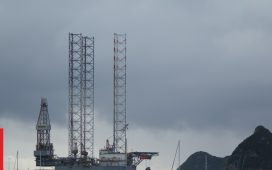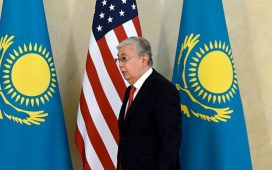[ad_1]
War in Ukraine, record fuel and food prices and rising interest rates are stoking the threat of stagflation but at least one region is positioned to avoid the worst of the downturn: south-east Asia.
Across the globe, investors are selling stocks in anticipation of higher interest rates and potential recession. The US Federal Reserve last week raised rates by more than expected in a bid to tame prices while China’s punitive zero-Covid strategy has depressed demand in the world’s second-largest economy.
South-east Asia, however, looks set to largely escape the stagflationary cycle of high inflation and cratering output. In four of the six biggest economies in the Association of Southeast Asian Nations, gross domestic product is rising faster than inflation, a Financial Times analysis of government data has found.
In those countries — Vietnam, Malaysia, Indonesia and the Philippines — economies are bouncing back as strict pandemic entry controls are removed and a resurgence of tourism fills hotels in hotspots ranging from Vietnam’s Ha Long Bay to Bali.
“What you are seeing in south-east Asia at the moment is a reopening bounce coming through: the growth environment is very strong, and that is likely to carry over into the second half of the year,” said Frederic Neumann, chief Asia economist at HSBC. “Asean is looking very resilient.”
“There’s not a lot of talk about stagflation here,” said Khoon Goh, head of Asia research for ANZ in Singapore. “One of the bright spots is that south-east Asian countries have embraced treating Covid as endemic, and have really moved on and eased restrictions and opened up their economies.”
Only in Thailand and Singapore has inflation climbed faster than gross domestic product growth. Thailand’s economy is rebounding, but rising inflation is dampening consumer demand, while Singapore last month warned that its recovery was slowing because of the impact of the war in Ukraine and lockdowns in China, its leading trading partner.
Around the region, the positive numbers partly reflect the “base effect” of bounce backs from deep economic downturns during the pandemic.
In the Philippines, which suffered one of the sharpest economic contractions of any country in the region after imposing hard lockdowns to contain Covid, GDP rose 8.3 per cent in the first quarter, sparked by a revival in consumption.
But south-east Asian economies are generating greater momentum in output, too, including steady growth in exports. Rising food, fuel and commodity prices have been good for the countries that export them in large quantities, whether palm oil (Indonesia and Malaysia), rubber (Thailand and Malaysia) or coal (Indonesia).
South-east Asian countries are also positioned to profit from shifts in production by manufacturers diversifying their supply chains away from China. Apple, for example, is shifting some of its production of iPads to Vietnam.
“Vietnam’s acceleration of manufacturing activities reflects its ability to substitute some of the loss of production in China because of zero-Covid supply-chain disruptions, especially in electronics, textiles and footwear,” said Trinh Nguyen, senior economist for emerging Asia with Natixis, a bank.
“The persistence of disruption in China and rising geopolitical tensions will further increase investment into south-east Asia.”
While Asean economies are generally performing well, some are more vulnerable to darkening global trends. The Philippines, for example, relies partially on imports for rice, a staple, and is a net importer of food and fuel. It is therefore not benefiting from the improved terms of trade enjoyed by food and fuel exporters such as Thailand and Singapore.
Policymakers in the region are, however, in some cases embracing price controls — a move that could soften the shock of inflation. Ferdinand “Bongbong” Marcos Jr, the new Philippine president who assumes power at the end of the month, promised during the campaign to bring down the price of rice by imposing a cap on the grain.
“In south-east Asia, some prices are controlled — for example, petrol in Malaysia and Indonesia — and that helps to keep headline inflation contained,” said ANZ’s Goh. “We are not seeing a large breakout in inflation like in the US or Europe.”
[ad_2]
READ SOURCE









